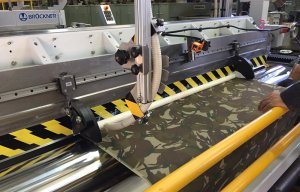
Algerian textiles producers on the upswing
OOO Nomateks produces more than 50 million m2 of high quality nonwovens for automotive and geotextile applications a year.
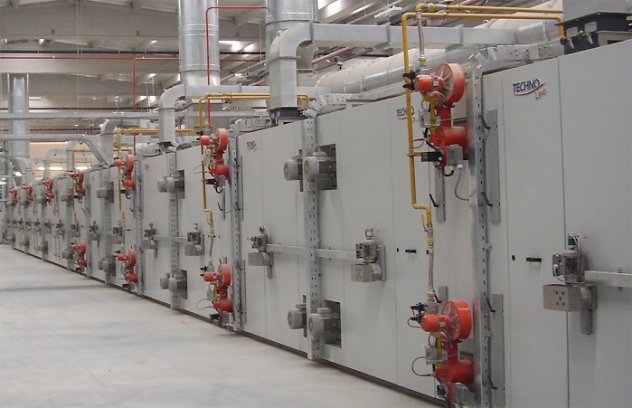
16th November 2016
Innovation in Textiles
|
Leonberg
Nonwovens are increasingly used as a lower priced alternative to traditional textile products in a number of visible and nonvisible automotive applications. In recognition of this trend, Brückner, a leading German textile machinery producer, is offering a range of innovative machines and lines for a resource-saving production of technical textiles used in modern vehicles.
The German technology specialist has recently supplied one of its coating lines for interior cladding based on needled nonwovens to a Russian customer, OOO Nomateks. Founded in the Uljanowsk region, near Samara, in 1961, OOO Nomateks was one of the first domestic producers of tufting floor coverings in USSR. It has since become one of the leading nonwovens producers in Russia, producing more than 50 million square metres of high quality nonwovens for automotive and geotextile applications a year.
A jointly realised project involving a number of technology providers focused on a number of customer’s requests, including the high level of flexibility and productivity, as well as minimised use of resources. To meet the customer’s requirements, the preparation times had to be optimised and the thermal and electrical energy demand had to be reduced considerably in comparison to the existing equipment.
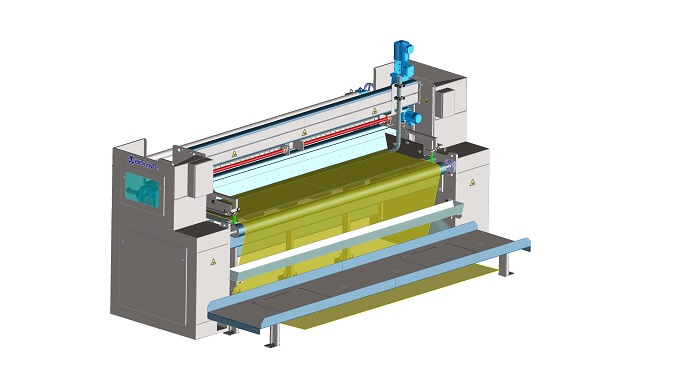
The line supplied to the nonwovens producer is able to coat more than 15 million square metres of nonwovens for automotive applications a year, depending on the type of fabric, the company reports. According to the manufacturer, it is possible to finish velour needle felt carpets, as well as unstructured needled nonwovens. With a length of more than 70 metres, it is one of the biggest lines Brückner ever supplied for the finishing of needled nonwovens.
“Since the project is a completely independent production line, the supply of the line with raw material has been considered from another point of view and a real alternative compared to the conventional preparation process in the batch has been found,” the company explains.
The use of an inline mixer of the Various Mix type produced by Messrs. Hansa Industrie Mixer is said to allow to meter water, latex, chalk and possible additives directly from the big discharging station into the line and to prepare a highly homogeneous compound. This compound is converted into an instable foam and is supplied directly to the application unit. A Brückner knife-over-table foam unit is installed for the application.
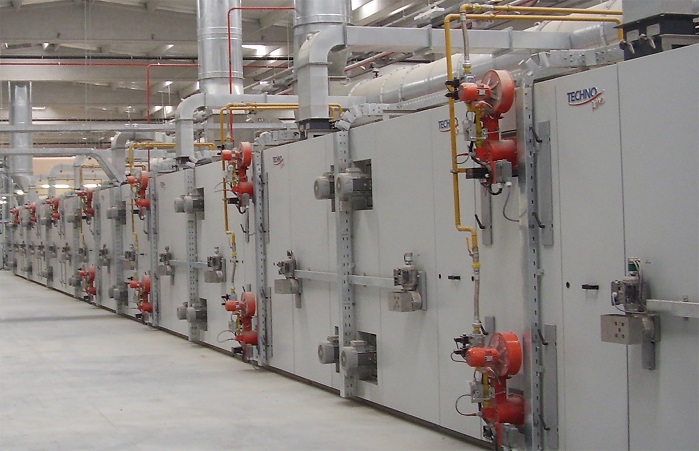
The gap between the knife and the table and thus the application quantity can be adjusted with a motor. The adjustment is made with a lifting spindle. The reproducibility of the settings is ensured by an absolute value transmitter. Normally, the adjustment is made on both sides, but corrections only on one side are also possible. The squeegee roller can be balanced pneumatically via a four-bar linkage. Due to the rotary movement around the articulation, the squeegee roller parts in case of a seam not only vertically, but also horizontally, preventing breakages in the material.
The coated nonwoven is dried in a more than 27 metre long Brückner DUO-THERM dryer, finished with a horizontal chain tensioning system to transport the fabric. The dryer, which is directly heated via fan-supplied gas burners, is said to allow temperature differences of up to 60 °C due to separate heating and air circulating systems above and below the fabric web. In addition to the separate temperature adjustment on the coating and pile side, the air speed and thus the air circulation intensity can also be adjusted independently by using the frequency-controlled circulating air fan drives. This is said to provide for a high drying performance with very gentle treatment of the pile and a high efficiency, preventing deformations.
The use of the patented Venturi system for a homogeneous mixing of the hot flue gas with the circulating ambient air leads to a very homogeneous temperature distribution across the width. The geometrically optimised Venturi nozzle needs absolutely no mechanical mixing elements and achieves with this a maximum efficiency,” the company explains.
In addition, the line is provided with a two-stage heat-recovery units air/air and air/water. On the one hand, it heats up the fresh air which is required for drying with the use of the exhaust air. This heated fresh air is added to the process at various points, aiming to provide for the best fresh air/exhaust air ratio.
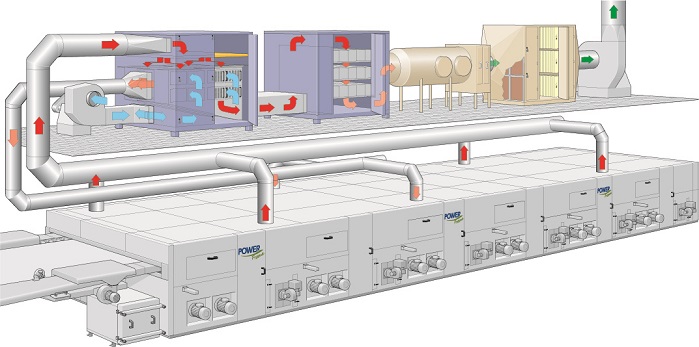
On the other hand, the ECO HEAT air/water heat-recovery unit is used to heat process water for further use in other NOMATEKS machines and lines. Depending on the production process, the system is said to reduce the thermal energy consumption by about 30% and allow a significant reduction of the production costs.
Heat-exchange processes are said to lead to a cooling of the exhaust air and thus to condensation or separation of pollutant particles. With this process, the heat-recovery unit aims to contribute considerably to the cleaning of the exhaust air.

Business intelligence for the fibre, textiles and apparel industries: technologies, innovations, markets, investments, trade policy, sourcing, strategy...
Find out more